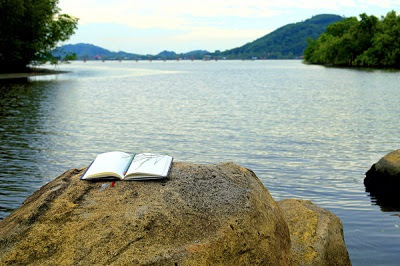Descriptive Prose Definition
Descriptive prose describes things as they are or as they appear to be. It can be the description of a person or a landscape or an event. In descriptive prose, we are able to see things as they are or were seen or heard or imagined by the describer. A good description translates the writer's observation into vivid details and creates an atmosphere of its own. Through his/her description, the author tries to recreate what she has seen or imagined. A fine description is a painting in words.Descriptive Prose Examples
Here is description of Mr.Squeers in Charles Dickens' Nicholas Nickleby (1838-39)
Mr.Squeers' appearance was not prepossessing. He had but one eye, and the popular prejudice runs in favour of two. The eye he had was unquestionably useful but decidedly not ornamental: being of a greenish grey, and in shape resembling the fan-light of a street door. The blank side of his face was wrinkled and puckered up, which gave him a very sinister appearance, especially when he smiled, at which times his expression bordered closely on the villainous. His hair was very flat and shiny, save at the ends, where it was brushed stiffly up from a low protruding forehead, which assorted well with his harsh voice and coarse manner. He was about two or three and fifty, and a trifle below the middle size; he wore a white neckerchief with long ends, and a suit of scholastic black; but his coat sleeves being a great deal too long, and his trousers a great deal too short, he appeared ill at ease in his clothes, and as if he were in a perpetual state of astonishment at finding himself so respectable.
Glossary
prepossessing - inspiring
puckered up - full of folds and wrinkles
sinister - wicked, evil
protruding - jutting out, projecting
scholastic - formal / academic
This is a graphic description of the appearance of Mr.Squeers. The details are so sharp that we can easily visualize the person. We are told his height, his eyes, his face, hair, forehead and dress. A successful description, it enables us to picture the person vividly. It is also a very enjoyable passage. Did you notice the irony in 'He had but one eye, and the popular prejudice runs in favour of two'? The irony and subtle humour continue throughout the passage so that the reader cannot help smiling at her/himself. The eye further likened to 'the fan-light of a street door' - a very interesting an unusual analogy. You must also have noticed how carefully Dickens chooses his words so that we can 'see' the hair that was 'very flat and shiny', 'hear' his 'harsh voice' and so on. These then are some of the devices that you will find used effectively in literary prose.
Here is another descriptive Prose Example:
Does this delight us in the same way what the previous passage did? Perhaps not. Although it certainly does give us some information about Ishtiaq Ali. Where is the difference? It is in the use of language. Here the language is purely functional with bald statements aimed at providing information rather than delight. In the earlier passage, it is a pleasure to read the sentences, again and again, savouring their suggestiveness.
As we have seen, the successful description makes you visualize the scene or the person. Generally, description is not an independent form of writing, that is, a whole book will not consist of description alone. It is often used as an aid to narrative or expository writing. Its main purpose is to describe a sense impression or a mood.
Difference between Prose and Poetry
What is a short story in literature
Different figures of speech


ConversionConversion EmoticonEmoticon